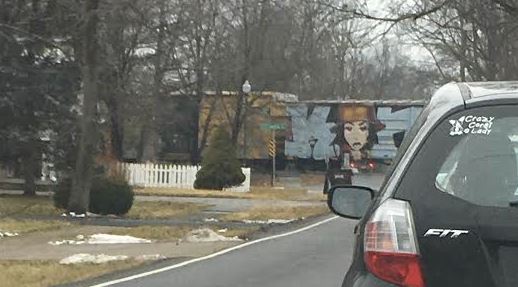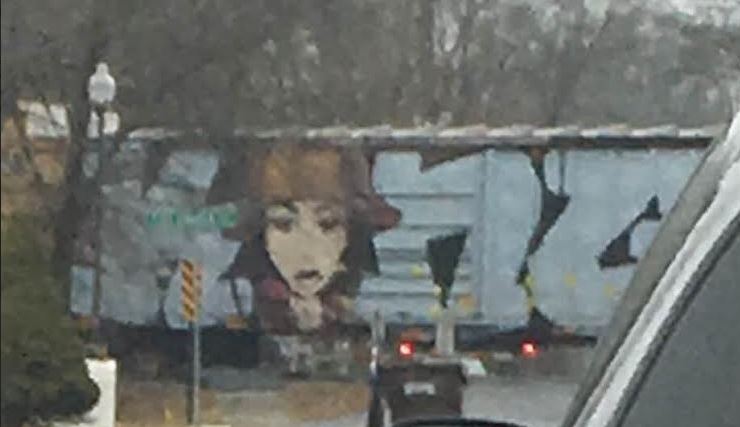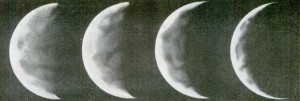Remember What The Dormouse Said.

My hardback copy of Alice’s Adventures in Wonderland and my facsimile copy of Alice’s Adventures Underground.
Chances are you’ve recently heard or read something about going down the rabbit hole or someone grinning like a Cheshire cat or acting like a mad hatter or screaming “Off with their heads!” I could go on. It’s been more than a century and a half since Alice’s Adventures In Wonderland was published and there are still Alice references everywhere and artists across the spectrum are constantly alluding to or drawing on Wonderland. My wife gave me a Mad Hatter t-shirt which I have to remind myself won’t last very long if I wear it every single day. It’s almost become cliché. I was tempted to roll my eyes at the beginning of The Matrix when Neo is told to “follow the white rabbit”, and not just because I thought it was setting us up for his whole experience to be a dream. Which it was, sort of, and he even goes through the looking glass, but that’s another story.
I’m pretty sure my love of literature started with Alice, even though it really started with an abridged and kind of muddled and abridged version of Wonderland combined with Through The Looking Glass. It was a vinyl album of several of the songs from the Disney animated version and the sleeve came with an illustrated booklet that had the basic outline of Wonderland with the Walrus and the Carpenter and Tweedledum and Tweedledee thrown in because, well, Disney never planned on doing a sequel. Speaking from the freezer section Walt even said his heart was never really in Wonderland, but I was intrigued enough by this pocket version that I wanted to know the whole story. And I was born in a period when the Disney film had officially been shelved as a classic but before VCRs, so the only way to see the film was to either wait for its broadcast on one of the five TV channels or the occasional summer theatrical re-release. So the Christmas I was nine my parents obliged with a hardback copy of Alice’s Adventures in Wonderland, which I still have. Some kids, when they finish a Harry Potter book, or even the whole series, turn right back to the beginning and start over. For a while that’s how I was with Wonderland. I’d begin at the beginning and go on until I’d reached the end then start over until I had practically every page and every one of Tenniel’s illustrations memorized. A few years later the Disney version did hit theaters again and I finally got to see it and was disappointed. It wasn’t the last but it was the first time in my life that I saw a film adaptation and said, “I liked the book better.” Most people I talk to feel the same way although it’s interesting how much of an influence the Disney version has. If I bring up Alice In Wonderland you probably think of Alice as a blonde blue-eyed girl in a blue and white dress even though Alice Liddell had dark hair. Anyway after seeing the movie I went back a reread the book. I still pull it out and read it once in a while. Even though there a million other books I still want to get to I’ve read Wonderland so many times I can get through it in less than an hour. And yet every time I read it I feel like I get something a little different out of it because of what I bring to it.
Lately it’s been tinged with an article I read called Alice’s adventures in algebra: Wonderland solved from the December 16 2009 issue of New Scientist. The author, Melanie Bayley, makes the argument that Wonderland is Dodgson’s way of attacking newfangled mathematical ideas that some of his contemporaries were mucking around with. Dodgson was a mathematical scholar at Oxford after all and, being thoroughly grounded in Euclid, it bothered him that some of his fellow dons were getting into things like imaginary numbers that had no connection to the real world. And I’m open to looking at Wonderland just about every which way anyone can think of but even after rereading the article several times I still feel kind of bothered about it. I have no problem believing that the Duchess, the crazy cook, and the baby that turns into a pig and the mad tea party are or contain subtle criticisms of some mathematical ideas Dodgson thought were too far out. But I think it’s too far out when Bayley takes the hookah-smoking caterpillar and says that scene isn’t about drugs but “I believe it’s actually about what Dodgson saw as the absurdity of symbolic algebra”. Maybe, but I believe it’s also probably about drugs. Unlike the mad tea party and the pig-baby and, for that matter, the Cheshire cat, the caterpillar is in Dodgson’s original story Alice’s Adventures Under Ground which he wrote for Alice Liddell and didn’t originally intend to have published. And eating the caterpillar’s mushroom Alice changes size, shrinking down to three inches high, which is the only way she can enter the Red Queen’s kingdom. Then during the trial she starts growing, maybe because the mushroom’s effects are wearing off. And Bayley even says the mad tea party is where Dodgson’s “satire of his contemporary mathematicians seems to end,” acknowledging that the whole of Wonderland isn’t a mathematical satire. In fact Wonderland–and I mean the place that Alice dreams of–is grounded in reality. At the end Alice tells the whole tale to her sister who closes her eyes and imagines and even hears Wonderland, knowing that as soon as she opens her eyes the sounds of the tea party and the Queen of Hearts and the gryphon will simply be “the confused clamour of the busy farm-yard”.

Am I a gryphon who was dreaming he was reading a story or a reader who is now dreaming he’s a gryphon?
I don’t want to be too critical because I think Bayley’s article is brilliant and makes me think differently about parts of Wonderland, which I always get a kick out of, but I have a problem with the idea that Wonderland is “solved”. A Cracked article called 6 Books Everyone (Including Your English Teacher) Got Wrong that cites Bayley’s article makes the mistake of assuming this is the answer. It’s a story, not an equation, and I think this touches on a much larger issue. I don’t believe art and science or even art and math are separate fiefdoms that never overlap–and I doubt anyone else really believes that, but it’s an easy mental trap to fall into. The arts are sometimes described as “soft” while math and science are “hard” even though they all inform each other and while modern math and science increasingly deal with uncertainties the arts have always been more about questions than answers. Where a mathematical equation is a question with a single answer a story doesn’t have to have an answer. In fact the best stories seem to be the ones that don’t have an answer at all, or that open us up to the possibility of lots of different answers. The riddle “Why is a raven like a writing desk?” may have been intended to be unanswerable but has at least a dozen different answers, including, “Because Poe wrote on both.”
I think it’s the unsolved and unsolvable nature of the story–of all stories–that keeps them alive.
And, yeah, I’m totally going there.











